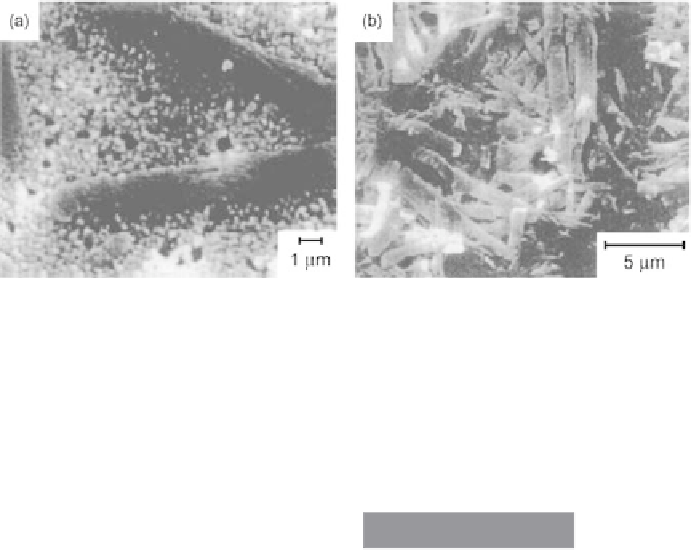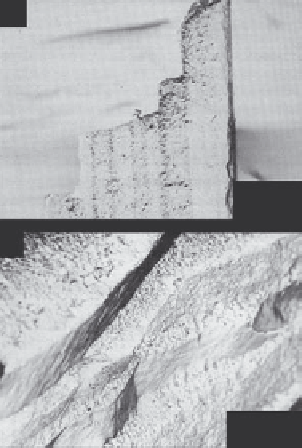Geoscience Reference
In-Depth Information
Figure 10.73 (a) Biocompatible reinforcement in the HAp/HAp (whisker) composites and
(b) HAp whiskers with Ca/P—1.66.
Source: Photographs courtesy of W. Suchanek.
(a)
(c)
HAp ceramics (literature data)
HAp/HAp(w) composites
HAp/20%HAp(w) HIP-ed
3.0
2.5
2.0
HAp/20%HAp(w) HP-ed
100
μ
m
1.5
(b)
1.0
3.5
HAp matris HP-ed
0.0
1975
1980
1985
1990
1995
2000
Year
100
μ
m
Figure 10.74 (a and b) SEM images of the fracture surface of the HAp/bioactive glass
composite. Notice the crack deflection on the
β
-NaCaPO
4
interphase layers. (c) Fracture
toughness of HAp ceramics.
Source: Parts (a and b) photographs courtesy of W.L. Suchanek and Part (c) courtesy of
M. Yoshimura and W.L. Suchanek.
Here the authors have used activated carbon as an inert porous carrier material for
distributing TiO
2
to be accessible to reactants for photocatalytic degradation.
Commercially available activated carbon was used along with coconut shell-based
activated carbon. Activated carbon was crushed into small particles and separated

















































